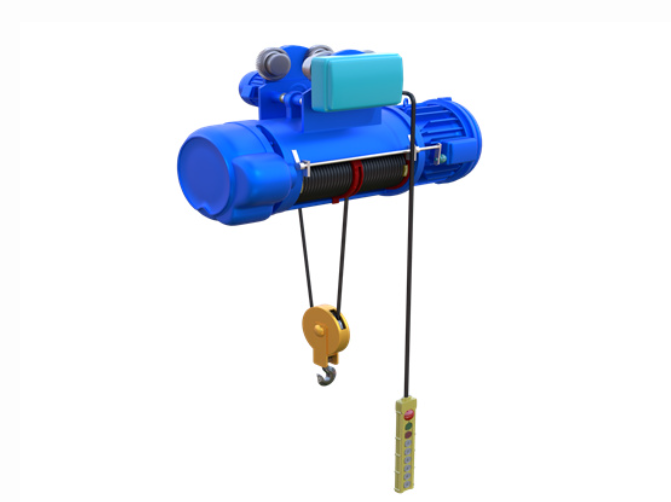Electrical hoists, that can also be called electrical winch, are essential tools in various industries, ranging from construction and manufacturing to warehousing and logistics. Whether you’re lifting heavy equipment, materials, or products, selecting the right electrical hoist is crucial for efficiency, safety, and productivity. With numerous options available in the market, it’s important to consider several factors before making a decision. In this blog post, we’ll explore the five key factors you should consider when choosing an electrical hoist.
Load Capacity
When it comes to selecting an electrical hoist, accurately assessing the load capacity is crucial. Underestimating the weight can compromise safety and put equipment at risk, while overestimating can be a drain on resources. It’s essential to choose a hoist that aligns perfectly with the maximum weight you anticipate lifting in your operations.
By doing so, you not only ensure safety but also optimize costs by avoiding unnecessary expenditures on higher capacity hoists.Understanding the load capacity of the electrical hoist allows you to maximize efficiency in your lifting operations. A hoist that matches the heaviest load requirements minimizes downtime and enhances productivity. This bespoke approach ensures that your equipment operates at its peak performance level while eliminating any risks associated with using a mismatched hoist for heavy loads.
Ultimately, investing time in evaluating this critical factor sets the foundation for smooth and safe lifting operations in various industrial settings.In essence, when considering an electrical winch load capacity, thorough examination and assessment are instrumental in making informed decisions tailored to your specific operational needs. By focusing on this primary factor initially, you pave the way for successful and efficient lifting processes while maintaining optimal safety standards and cost-effectiveness within your workplace environment.Related Article: X-BULL Electric 12V Winch for ATV, 4WD & BOAT
Lift Height
When determining the appropriate lift height for an electrical winch, it is essential to consider the specific requirements of your lifting application. Opting for a hoist with a lift height that meets or exceeds the vertical distance needed ensures efficient and safe operations. Additionally, exploring hoists with adjustable lift heights can provide flexibility in adapting to various load sizes and lifting scenarios.
These features not only enhance productivity but also contribute to overall ease of use and versatility in handling different types of loads.Extended lift capabilities in some electrical hoists offer a practical solution for applications requiring greater vertical reach. This additional feature can be particularly advantageous in industrial settings or construction projects where lifting heavy loads to significant heights is common. By selecting a hoist with extended lift capabilities, operators can effectively tackle challenging lifting tasks while maintaining high levels of safety and precision.
Investing in a hoist with the right lift height and additional features tailored to your specific needs can greatly enhance operational efficiency and ensure successful outcomes in various lifting operations.
Speed and Control
When assessing the speed capabilities of an electrical winch, it is vital to consider the specific requirements of your operations. Variable speed control can offer significant advantages in tasks that demand precise positioning and delicate handling of loads. By having the flexibility to adjust the lifting speed, operators can enhance efficiency and safety while minimizing the risk of damage to the materials being lifted.Advanced features such as adjustable speed settings and ergonomic controls play a crucial role in improving operator comfort and overall productivity.
The ability to customize speed settings based on different load weights or operational needs can lead to smoother workflow processes and reduce downtime. Additionally, incorporating innovative safety mechanisms into the hoist’s design can provide peace of mind for both operators and supervisors, ensuring a secure working environment while maximizing performance.
Duty Cycle and Usage Environment
When selecting an electrical hoist, one crucial factor to consider is its duty cycle, which determines how long the hoist can operate continuously without overheating. Different applications require different duty cycles, ranging from occasional use to continuous operation. Matching the hoist duty cycle with your usage requirements is essential to ensure optimal performance and longevity.
The operating environment plays a significant role in determining the durability of the hoist. Factors such as ambient temperature, humidity levels, presence of dust, and exposure to corrosive substances can affect the hoist’s performance and overall lifespan. It is advisable to choose a hoist with durable construction and appropriate protection ratings that align with the specific conditions in which it will be used for reliable operation over time.
Safety Features and Compliance
When selecting an electrical winch, one must prioritize safety above all else. It is essential to evaluate the safety features integrated into the hoist, such as overload protection mechanisms, emergency stop buttons, limit switches, and anti-drop devices. These features are crucial in preventing accidents and ensuring smooth operations in various industrial settings. Additionally, verifying that the hoist complies with recognized safety standards like ANSI ASME and carries CE certifications further reinforces its reliability and adherence to stringent safety protocols.
Apart from focusing on safety features alone, it is equally important to consider the availability of training resources provided by the manufacturer. Proper training ensures that operators are well-equipped to handle the hoist safely and understand maintenance practices thoroughly. The manufacturer’s support in providing comprehensive training materials underscores their commitment to promoting safe usage of their products and minimizing risks associated with incorrect operation or maintenance. By prioritizing safety considerations across all aspects of selecting an electrical hoist, businesses can create a secure working environment for their employees while upholding industry standards for equipment compliance.
Conclusion
Choosing the right electrical winch requires careful consideration of various factors, including load capacity, lift height, speed and control, duty cycle, usage environment, and safety features. By thoroughly assessing your specific requirements and comparing different hoist options, you can make an informed decision that enhances productivity, efficiency, and safety in your operations. Remember to consult with industry experts and reputable suppliers to ensure that you select a hoist that meets your needs and exceeds your expectations.



